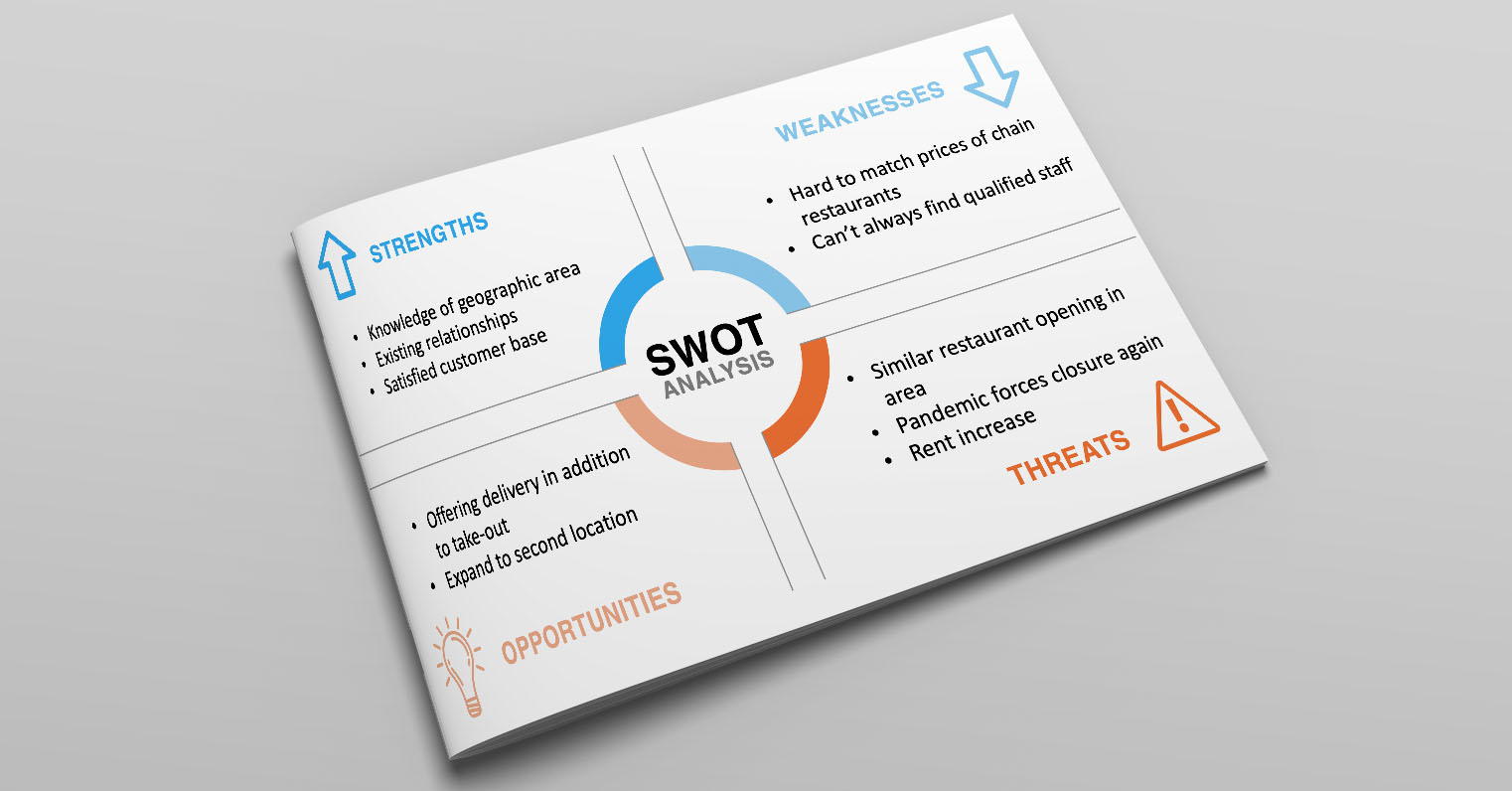Understanding Business Level Strategy: 5 Types & Examples

Having the right corporate strategy is crucial. Business-level strategy focuses on specific markets, guiding individual units within a company toward achieving competitive advantage. Unlike broader corporate strategies, these are tailored to the unique challenges of each market.
This article covers five key business-level strategies and how to apply them effectively. Whether your goal is cost reduction, differentiation, or targeting a niche, understanding these strategies is essential for driving growth and success.
Main Takeaways From This Article:
- Business-level strategy focuses on how a company competes in specific markets, guiding business units to achieve a competitive edge.
- Business-level strategy operates between corporate-level strategy (organization-wide direction) and functional-level strategy (departmental actions).
- The five key business-level strategies are Cost Leadership, Differentiation, Focused Cost Leadership, Focused Differentiation, and Integrated Strategy, each with its unique approach to gaining a market edge.
- Successful strategy execution involves market analysis, clear objectives about managing core competencies, resource allocation, and continuous adaptation.
What Is Business-Level Strategy?
The general business strategy hierarchy consists of three levels: corporate, business, and functional. The business level strategy focuses on activities that drive a company to achieve the broad objectives set at the corporate level. Typically, business level strategies enable an organization to achieve competitive advantage and generate more customer loyalty and value within its market.
A simpler way to understand business level strategy is that it pushes your company in the right direction toward making goals a reality. A business-level strategy sets the stage for functional-level strategies, which include specific tasks and benchmarks that departments and individual personnel must perform to reach corporate-level strategies.
Business-Level Strategy vs. Corporate and Functional Strategies
Business-level strategy focuses on how a company competes within a specific market, guiding individual units or product lines to achieve a competitive edge.
Corporate-level strategy, in contrast, oversees the entire organization, setting long-term goals and determining market participation, resource allocation, and overall positioning. It ensures all business units align with the company's broader objectives.
Functional-level strategy is more detailed, focusing on specific departments—like marketing or operations. It involves the tactics and processes that support the business-level strategy, ensuring that each department's efforts align with the company's competitive goals.
Together, corporate, business, and functional strategies create a cohesive plan that drives the organization's success.
Why Is Business Level Strategy Important?
Business-level strategies enable companies to align their resources, capabilities, and operations in a way that drives sustainable growth and long-term success.
Let's take a closer look at why business-level strategy is so vital:
Competitive Advantage
In today's crowded marketplace, a robust business-level strategy empowers a company to carve out a competitive advantage by differentiating itself from its rivals. This might involve adopting a cost leadership approach to offer the lowest prices in the market, developing unique products that meet unaddressed needs, or providing exceptional customer service that fosters loyalty.
By clearly defining how the company will compete, a business-level strategy makes it possible to gain and maintain a leading position in the market.
Targeted Resource Allocation
Resources in any organization are finite, making it crucial to deploy them where they can deliver the greatest return. A business-level strategy guides this process by identifying the most promising investment opportunities.
Whether it's focusing on product development, marketing, or operational efficiency, a targeted approach ensures that resources are used effectively, maximizing impact and minimizing waste. This targeted allocation not only boosts performance in key areas but also helps avoid spreading resources too thinly across less critical initiatives.
Customer Focus
Understanding and meeting customer needs is at the heart of any successful business. A well-defined business-level strategy centers on the specific preferences and expectations of the target market.
By concentrating efforts on delivering what customers value most—be it quality, price, innovation, or service—companies can enhance customer satisfaction and loyalty. This customer-centric approach not only drives sales but also builds a strong brand reputation, making the company a preferred choice in the market.
Sustainable Growth
While short-term gains can be appealing, long-term success depends on sustainable growth. A business-level strategy provides a roadmap for growth that is aligned with the company's core strengths and market opportunities.
By setting clear objectives and defining the path to achieve them, the strategy ensures that growth is both achievable and sustainable. This forward-looking approach allows businesses to adapt to changing market conditions while maintaining a steady trajectory toward their overarching goals.
In doing so, a business-level strategy helps companies avoid the pitfalls of rapid, unsustainable expansion and instead fosters growth that can be maintained over the long term.
5 Business-Level Strategy Examples
Choosing the right business-level strategy is essential for gaining a competitive edge. Here are the five primary strategies companies can use, each with its own unique approach:
1. Cost Leadership Strategy
The cost leadership strategy focuses on becoming the lowest-cost producer in the industry. By significantly reducing production and operational costs, companies can offer products or services at prices lower than those of their competitors. Cost leadership strategies attract price-sensitive customers and help capture a larger market share.
To succeed with cost leadership, companies often rely on high-volume production, streamlined processes, and innovative cost-cutting techniques. This strategy is particularly effective in highly competitive markets where maintaining profitability, even during price wars, is crucial.
2. Differentiation Strategy
Differentiation involves creating products or services that stand out as more valuable to customers. Companies adopting this strategy emphasize unique features, superior quality, exceptional service, or strong brand identity to distinguish themselves from competitors.
The ability to differentiate allows companies to command higher prices, drawing in customers who are willing to pay more for something special. Achieving success in differentiation requires a deep understanding of customer needs and a relentless commitment to innovation and quality.
3. Focused Cost Leadership
Focused cost leadership targets a specific market niche with a low-cost offering tailored to that segment. Unlike broad cost leadership, which aims at a wide audience, this strategy zeroes in on a particular group of customers or a specific geographic area.
Companies achieve cost leadership within their niche by being more efficient than competitors in serving that market segment. This approach is especially effective when the target market is underserved or when rivals are less adept at meeting the needs of that niche.
4. Focused Differentiation Strategy
Focused differentiation centers on serving a particular market segment with specialized products or services that cater to the unique preferences of that group. This strategy enables businesses to charge premium prices within their niche, as customers place high value on the tailored offerings.
Differentiation strategies work well in markets where consumers are willing to pay more for products that meet specific needs, such as luxury items or specialized services. The key to success lies in thoroughly understanding the niche market and consistently delivering uniquely valuable offerings.
5. Integrated Strategy
The integrated business level strategy combines elements of both cost leadership and differentiation. Companies using this approach strive to offer a balanced mix of low costs and unique features, aiming to provide superior value to customers.
The challenge with an integrated strategy is maintaining the balance between cost efficiency and product differentiation. When executed effectively, this strategy can position a company strongly by appealing to customers who seek both affordability and distinctive offerings. However, it requires careful management to ensure neither cost savings nor product innovation is compromised.
How To Identify and Implement Your Business-Level Strategy
Building and executing an effective business-level strategy requires a structured, actionable approach. Follow these steps to develop a strategy that aligns with your goals and positions your business for sustained success.
1. Analyze the Market and Competitive Landscape
Start by gathering comprehensive data on your industry, including market trends, customer needs, and the competitive landscape. Understand who your target customers are, what they value, and where there are unmet needs. This analysis helps identify opportunities and potential threats in the market.
Next, take a deep dive into your competitors. Assess their strengths and weaknesses, and analyze what strategies they're using. Understanding your competitors will help you identify gaps in the market that your business can exploit. This step is crucial for setting the stage for your strategic decisions and ensuring you're positioning your business where it can succeed.
2. Evaluate Your Company's Strengths and Weaknesses
Conduct a thorough internal review to assess your company's capabilities. Identify your core strengths, such as operational efficiency, technological expertise, or strong brand reputation. These strengths should be the foundation of your strategy, helping you capitalize on market opportunities.
At the same time, be honest about your company's weaknesses. Understanding where you fall short allows you to develop strategies that mitigate these areas. Whether it's a lack of resources, outdated technology, or talent gaps, addressing these weaknesses is crucial for building a realistic and effective strategy.
3. Define Vision and Values
Clearly articulate your company's vision, outlining what you aim to achieve in the long term. This vision should be ambitious but achievable, providing direction for all strategic efforts. Your vision serves as the guiding star for your business, ensuring everyone knows where the company is headed.
Alongside your vision, define your core values—the principles that will guide decision-making and behavior across the organization. These values should align with your business goals and resonate with your team. A clear vision and strong values not only guide your strategy but also unify and motivate your team.
4. Select the Right Business Level Strategy
Based on your market analysis and internal assessment, choose a business-level strategy that aligns with your goals and capabilities. Whether it's cost leadership, differentiation, or a focused approach, ensure the strategy leverages your strengths and addresses a clear market need.
Be strategic in your selection, considering how your choice will position your business in the market and how it will be perceived by customers. This decision is critical, as it sets the direction for all your company's efforts moving forward. Make sure your chosen strategy is both feasible and aligned with your long-term vision.
5. Set Clear Strategic Objectives
Translate your chosen strategy into specific, measurable objectives. These objectives should have clear outcomes and timelines, providing a roadmap for your team. For example, if your strategy focuses on differentiation, an objective might be to develop and launch a new product line within a year.
Ensure that each objective is realistic and directly tied to your overall strategy. Clearly defined objectives create accountability within your organization and help ensure that everyone is working towards the same goals. These objectives also provide benchmarks for tracking progress and making necessary adjustments along the way.
6. Develop and Align Projects with Strategic Objectives
Break down your strategic objectives into actionable projects and initiatives. Each project should have a clear purpose and be designed to achieve one or more of your strategic objectives. Assign responsibilities and set deadlines for each project to ensure accountability.
Make sure that all projects are aligned with your strategic goals. This alignment ensures that every effort across the organization is focused on achieving the same overarching objectives. It also helps prevent resources from being spread too thin or wasted on initiatives that don't directly contribute to your strategy.
7. Identify and Track Key Performance Indicators (KPIs)
Establish KPIs that align with your strategic objectives to measure success. These indicators should be specific, measurable, and directly tied to the outcomes you want to achieve. For example, if your objective is to increase market share, a relevant KPI might be the percentage growth in sales within your target market.
Regularly track these KPIs to monitor progress and identify areas where adjustments may be needed. KPIs provide valuable insights into the effectiveness of your strategy and help you make data-driven decisions. They also keep your team focused on achieving the desired outcomes, ensuring that everyone remains aligned with the strategic goals.
8. Allocate Resources Effectively
Distribute your company's resources—such as budget, personnel, and technology—according to the priorities set by your strategy. Focus your resources on the projects and areas that will drive the most significant impact, ensuring that your critical initiatives have the support they need to succeed.
Regularly review your resource allocation to ensure it remains aligned with your strategic objectives. Flexibility is key; be prepared to reallocate resources as market conditions or internal priorities change. Effective resource allocation maximizes the impact of your strategy and helps ensure that your business can adapt to new challenges.
9. Implement, Monitor, and Adapt
Begin by implementing your strategy with a clear, actionable plan. Roll out the projects and initiatives according to the established timelines, and ensure that all team members understand their roles and responsibilities. Effective implementation is crucial for turning your strategy into tangible results.
Continuously monitor progress using the KPIs you've set, and be ready to make adjustments as necessary. Market conditions, competition, and internal factors can all change, so it's essential to remain agile. Regularly review your strategy's performance and make iterative improvements to keep your business aligned with its goals and the evolving market landscape. Adaptability and continuous improvement are key to maintaining a competitive edge and ensuring long-term success.
Execute a Successful Business Strategy with Spider Impact
Business-level strategies empower your organization to experience more success in attaining overall goals, but it can be challenging to know the best approach for devising them. To ensure your company develops the most effective business strategies, turn to Spider Impact for help.
Spider Impact is the industry's leading performance management software. Our team of performance management enthusiasts, software developers, and support experts work collaboratively around a single vision – enabling customers to realize their strategic performance potential. Click for a free trial or demo to learn how Spider Impact puts all these components together for organizations.
Frequently Asked Questions
What is business-level strategy and how does it differ from corporate strategy?
Business-level strategy focuses on how a company competes within specific markets, guiding individual units or product lines to achieve a competitive edge. Unlike corporate strategy which oversees the entire organization and sets long-term goals, business-level strategy operates between corporate-level direction and functional-level departmental actions, focusing on activities that drive a company to achieve broad objectives and generate customer value within its market.
Why is business-level strategy important for organizations?
Business-level strategy is crucial because it enables companies to align their resources, capabilities, and operations to drive sustainable growth and long-term success. It helps organizations gain competitive advantage by differentiating themselves from rivals, ensures efficient resource allocation, maintains customer focus by meeting specific market needs, and provides a roadmap for sustainable growth that aligns with core strengths and market opportunities.
What are the five main types of business-level strategies?
The five main types of business-level strategies are Cost Leadership (becoming the lowest-cost producer), Differentiation (creating unique value through features or quality), Focused Cost Leadership (targeting a specific market niche with low-cost offerings), Focused Differentiation (serving particular segments with specialized products), and Integrated Strategy (combining elements of both cost leadership and differentiation to provide balanced value).
How can organizations effectively implement a business-level strategy?
Organizations can effectively implement a business-level strategy by following a structured approach that includes analyzing the market and competitive landscape, evaluating company strengths and weaknesses, defining vision and values, selecting the appropriate strategy type, setting clear objectives, developing aligned projects, tracking KPIs, allocating resources effectively, and continuously monitoring and adapting the strategy based on performance and market changes.
What role do KPIs play in business-level strategy implementation?
KPIs play a crucial role in business-level strategy implementation by providing specific, measurable indicators that align with strategic objectives and help track success. They enable organizations to monitor progress, identify areas needing adjustment, and make data-driven decisions. Regular KPI tracking keeps teams focused on achieving desired outcomes and ensures everyone remains aligned with strategic goals.
How can companies ensure their business-level strategy remains effective over time?
Companies can ensure their business-level strategy remains effective by continuously monitoring market conditions, tracking KPIs, and being ready to adapt to changes. This involves regular strategy reviews, iterative improvements based on performance data, maintaining flexibility in resource allocation, and ensuring the strategy stays aligned with evolving market conditions and internal capabilities while supporting long-term organizational goals.
Demo then Free Trial
Schedule a personalized tour of Spider Impact, then start your free 30-day trial with your data.






